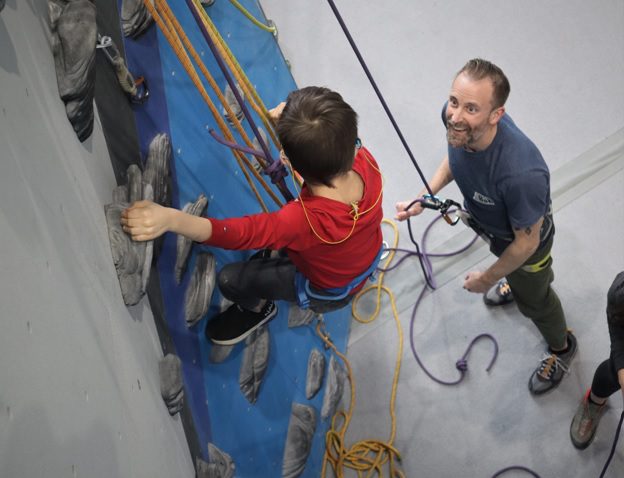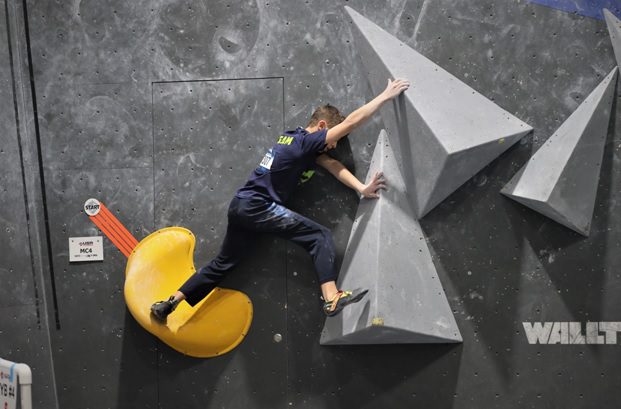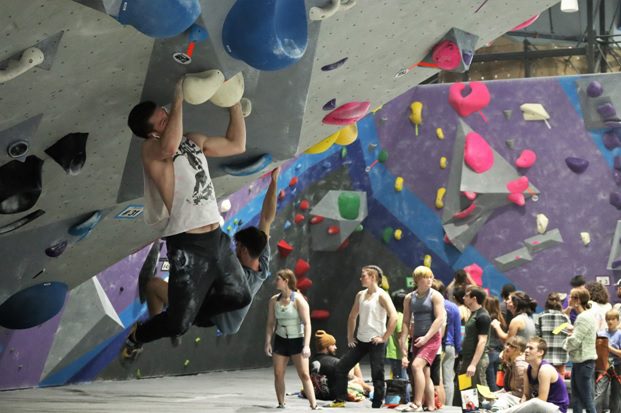
The Art of Falling: Developing Proper Rock Climbing Techniques for Safe Descents
Have you ever found yourself clinging to a rock wall, heart pounding, unsure of what comes next? In the thrilling world of indoor rock climbing, reaching new heights and conquering challenging routes is the ultimate goal.
But what about the descent? The “art of falling” is often overlooked, yet it is an essential skill every climber should master to ensure their safety and build confidence on the wall.
How can you fall gracefully and safely? What techniques and strategies can you employ to minimize the risk of injury?
In this article, we will equip you with the knowledge and skills to navigate descents with ease and confidence.
Understanding the Importance of Proper Falling Techniques
Understanding the importance of proper falling techniques is essential for every indoor rock climber. It goes beyond just preventing injuries—it empowers climbers to push their limits, explore new challenges, and enhance their overall climbing experience.
Let’s take a closer look at the significance of developing these techniques and how they can be applied in real-life climbing scenarios.
1. Minimize the risk of injury
One of the primary reasons for mastering proper falling techniques is to minimize the risk of injuries.
In the dynamic and unpredictable world of rock climbing, falls are inevitable. By learning how to fall properly, climbers can significantly reduce the chance of sustaining serious injuries, such as sprains or fractures.
Instead of landing awkwardly or uncontrollably, they can land in a controlled manner, dispersing the impact and minimizing the strain on their bodies.
Imagine, for example, that you’re rock climbing in Philadelphia, taking on a challenging route at your favorite indoor rock climbing facility. As you reach a difficult move, you lose your grip and start to fall.
Thanks to your understanding of proper falling techniques, you instinctively relax your body, aim for a safe landing spot, and execute a controlled roll upon impact. By doing so, you mitigate the risk of injury and can continue climbing with confidence.
2. Boost mental resilience
Proper falling techniques play a vital role in building mental resilience. Fear of falling can hinder a climber’s progress and prevent them from attempting challenging routes or pushing their limits.
However, when climbers develop the skills to fall safely, they gain the confidence to overcome this fear. Knowing that they can navigate falls without significant harm allows them to step outside their comfort zones and explore new climbing possibilities.
Imagine, for example, that you’re again practicing rock climbing in Philadelphia, eyeing a route that appears daunting.
The moves look intimidating, and the height is a bit unnerving. However, with the knowledge of proper falling techniques, you gather the courage to give it a try.
As you climb, you find yourself slipping, but instead of panicking, you calmly execute a controlled fall, feeling empowered by your ability to handle the descent safely. This boost in mental resilience enables you to embrace challenges and grow as a climber.
3. Improve overall climbing performance
Mastering the art of falling has a positive impact on climbers’ overall performance.
When climbers have confidence in their falling abilities, they can focus more on their climbing technique and strategy. The fear of falling no longer distracts them, allowing them to channel their energy and attention into improving their skills.
With a clear mind and enhanced focus, climbers can move more efficiently, make better decisions on the wall, and ultimately improve their overall climbing performance.

The Fundamental Techniques of Safe Descents
Now that we understand the importance of proper falling techniques, let’s delve into the fundamental strategies and skills to ensure safe descents in indoor rock climbing:
- Spotting the landing: Always assess your landing zone before attempting a climb. Look for potential hazards such as uneven surfaces, obstacles, or other climbers. Visualizing your descent and spotting the landing area will help you make calculated decisions during a fall.
- Relax and roll: Tension in your body during a fall can lead to injuries. Instead, focus on relaxing your muscles and aim to roll with the impact. Practice falling from lower heights to get comfortable with this technique.
- Use controlled dropping: Rather than attempting to cling to the wall during an inevitable fall, consider controlled dropping. By pushing yourself away from the wall and allowing your body to drop safely, you can avoid awkward twists and potential injuries.
- Protect your head and limbs: During a fall, prioritize protecting your head and limbs. Tuck your chin to your chest and keep your limbs close to your body to minimize the risk of impact.
Practical Application and Real-Life Examples
Let’s put these techniques into practice with a few real-life scenarios commonly encountered in indoor rock climbing:
1. Scenario: Reaching the top and preparing to descend
Technique: Before initiating your descent, assess the landing area and communicate with your belayer or fellow climbers to ensure a clear path.
Example: Imagine you have successfully reached the top of a challenging route. As you prepare to descend, take a moment to scan the climbing area below and communicate with your belayer to confirm a safe descent path.
2. Scenario: Unexpected slip or loss of balance during a climb
Technique: Stay calm and aim to control the fall by using the proper falling techniques discussed earlier.
Example: While attempting a challenging boulder problem at Reach Climbing & Fitness, you unexpectedly slip from a hold. Remembering your training, you quickly relax your body and execute a controlled drop, safely landing on the mat below.
3. Scenario: Inadvertent fall due to fatigue or muscle failure
Technique: Maintain awareness of your fatigue level and listen to your body. When exhaustion sets in, it’s essential to prioritize safety over completing a climb.
Example: After an intense climbing session at Reach Climbing & Fitness, your muscles fatigue, and you start losing your grip. Sensing the strain, you decide to let go and fall deliberately, preventing potential injury caused by pushing beyond your limits.

Embracing the Art of Falling: Elevating Your Climbing Journey
By developing proper falling techniques, you unlock a new level of confidence and safety in your indoor rock climbing endeavors.
Remember, mastering the art of falling takes practice and patience. As you refine your skills, you’ll gain the ability to assess potential risks, relax during falls, and protect yourself from injury. So, embrace the art of falling and elevate your climbing journey to new heights at Reach Climbing & Fitness in Philadelphia.
With our state-of-the-art facilities and expert instructors, we offer the perfect environment to refine your skills and embark on thrilling climbing adventures.
Remember, safety should always be your top priority. Happy climbing!


No Comments